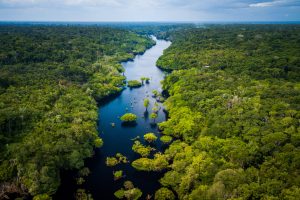Full sail ahead: Investing in SDG 14: Life Below Water

The Sustainable Development Goals (SDGs) are 17 interconnected goals established by the UN in 2015. The goals cover a wide range of issues, from combating poverty and hunger to promoting comprehensive healthcare and education, to achieving gender equality and addressing climate change. This article explores the investment opportunities in SDG 14: Life Below Water.
To learn more about each of the SDGs, take a look at our overview: Investing in SDGs: Guiding global impact and sustainable returns.
Understanding SDG 14
SDG 14, Life Below Water, addresses the urgent need to protect the world’s oceans and marine ecosystems. Oceans cover more than 70% of the planet’s surface and are critical for global climate regulation,
Biodiversity
At a high level, the ocean:
- Generates 50% of the oxygen we breathe 1
- Absorbs 25% of all CO2 emissions, and 90% of excess heat caused by those emissions 2
- Annually produces 17% of all animal proteins for human consumption, equivalent to the weight of approximately 2.5 billion people 3 (157.7 million tonnes in 2020) 4
- Facilitates carriage of 90% of global trade by shipping 5 , the most cost-effective method to move large quantities of goods 6
However, we’re currently damaging the ocean at a faster rate than it can recover.
The importance of investing in SDG 14: Life Below Water
Investing in SDG 14: Life Below Water means investors can contribute to improving the health of the ocean as targeted by SDG 14 in several ways. Most notably, through technologies that reduce the flow of pollution into the ocean, or funding solutions to remediate the damage which has already occurred.
Investing in ocean-related activities, also known as the Blue Economy, is picking up significant momentum. The volume of investment in the Blue Economy has increased more than threefold over the last ten years. 7
Below, we explore four key target areas outlined in SDG 14: Life Below Water, their importance, and how to invest in their resolution.
Key areas for investment in SDG 14
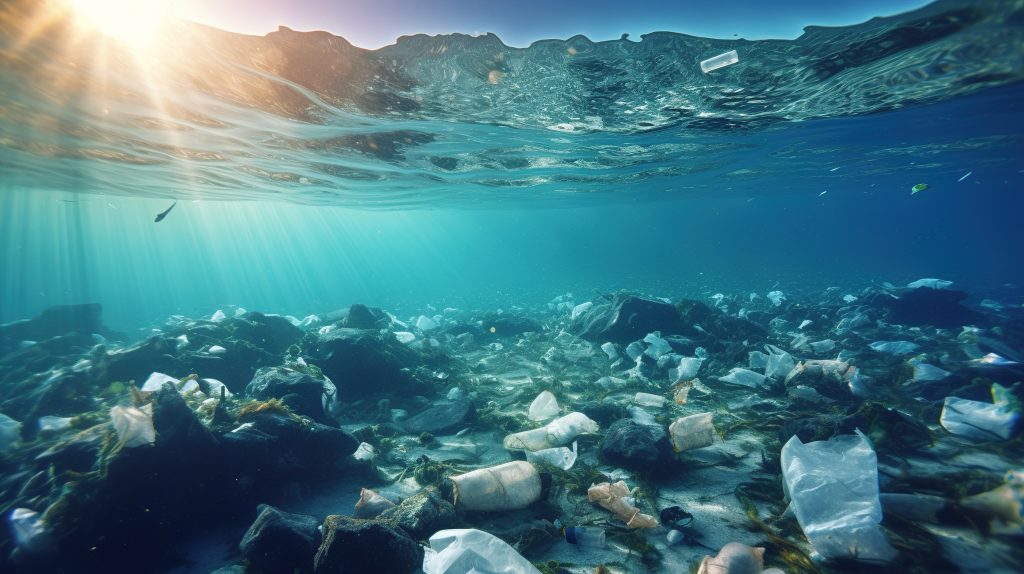
1. Pollution reduction
Target 14.1: By 2025, prevent and significantly reduce marine pollution of all kinds, particularly from land-based activities, including marine debris and nutrient pollution.
Pollution in the ocean is currently embodied by two key issues: plastic pollution and nutrient runoff.
It’s been estimated that 11 million tonnes of plastic enter the ocean every year. 8 This volume is projected to double in the next twenty-five years unless drastic action is taken. 9
Alongside this, untreated sewage and agricultural runoff entering bodies of water lead to algal blooms – when algae grow excessively in a body of water. This blankets the surface of both fresh and ocean bodies. When these algae die, the resulting drop in oxygen levels creates ‘dead zones’ – areas in which few animals can survive. The number and size of dead zones in the ocean continues to climb, from approximately 400 in 2008, to 700 in 2019. 10
Greater resource efficiency and less waste can lead to lower company operating costs. In the context of the ocean, this will be borne out through lower input costs for farmers (e.g., optimised application of fertiliser), or packaging costs for food and beverage companies.
In November 2024, the United Nations is scheduled to finalise the text for an international, legally binding treaty to end plastic pollution. 11 As regulatory pressure for deposit return schemes 12 or recycled resin requirements 13 grows, plastic waste will become an asset rather than a liability. This means food and beverage companies will be incentivised to recapture and reuse their packaging, closing the loop, which currently floods the ocean with plastic waste. 14
Specific opportunities for investors include:
- Precision agriculture technologies, to lower fertiliser use and runoff from farms
- Waste management and recycling services, to capture, sort, and reintroduce existing plastic back into supply chains
- Water treatment services and equipment, to decrease untreated sewage discharge
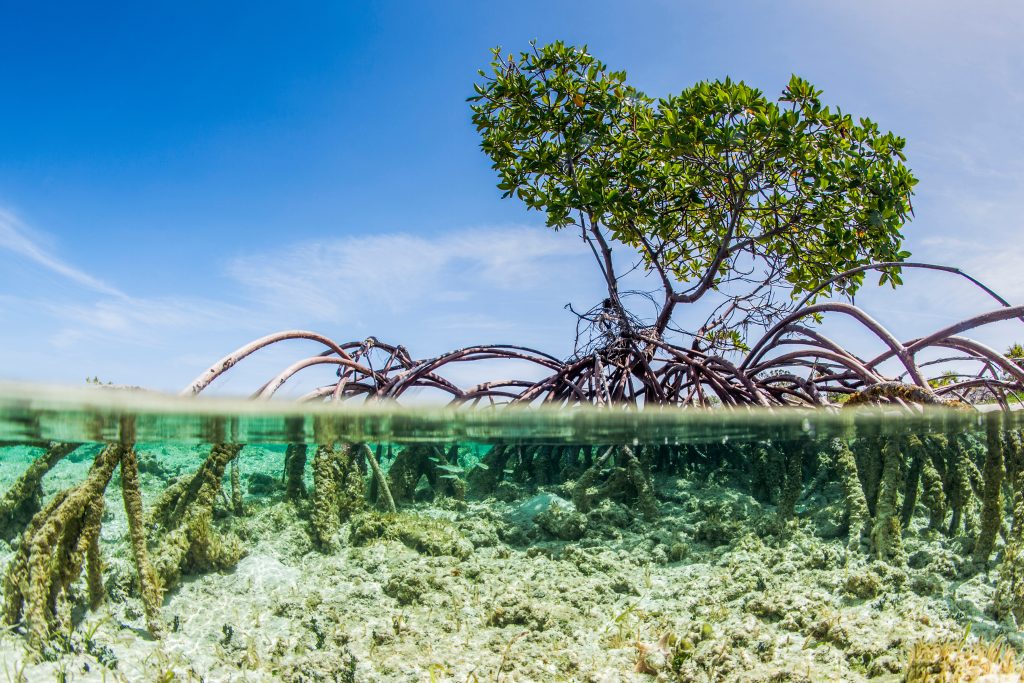
2. Protection from marine habitat destruction
Target 14.2: By 2020, sustainably manage and protect marine and coastal ecosystems to avoid significant adverse impacts, including by strengthening their resilience, and take action for their restoration.
Target 14.5: By 2020, conserve at least 10% of coastal and marine areas, consistent with national and international law and based on the best available scientific information.
Since 1957, over half of all coral reefs and mangroves have been lost. 15 , 16 In addition, 25% of all marine life is dependent on coral reefs at one point during their lifetime. 17 Currently, mangroves prevent more than $65 billion in property damage from extreme weather events and flooding. 18 Conservation of existing mangrove forests and restoration of losses could safeguard in the environment equal to 1.27 gigatonnes of CO2. 19
Healthy ocean habitats will create more resilient and profitable fisheries while providing greater ecosystem services such as carbon sequestration or coastal flood protection. Research suggests that developing nations could experience annual damage equal to more than 5% of national GDP if no preventative measures are taken to mitigate extreme flooding events as the climate warms. 20
Investors can scale solutions here through:
- Blue Bonds, targeting either fish-stock recovery, community support, or natural resource restoration 21
- Development Bank Projects seeking to assist waste management, nature-based coastal defence, and coastal community engagements
- Carbon credit programmes targeting coral reefs, mangroves, or seagrass habitats
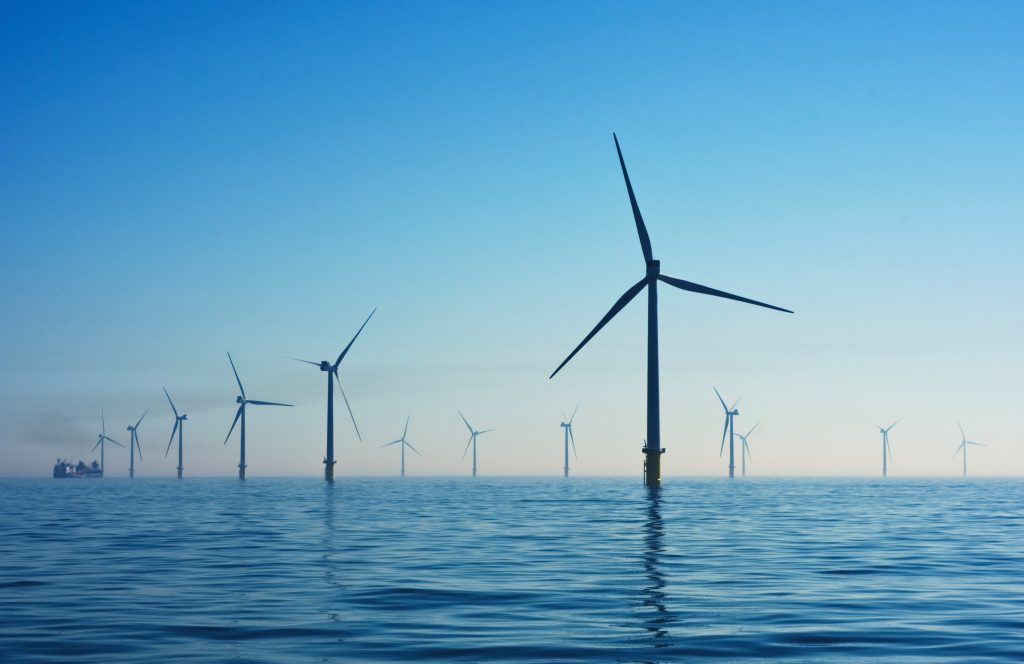
3. Combating ocean warming and acidification
Target 14.3: Minimize and address the impacts of ocean acidification, including through enhanced scientific cooperation at all levels.
An effective method to slow global ocean warming is to decrease the volume of greenhouse gases emitted each year. This is represented much clearer in SDG 7 (Clean and Affordable Energy).
90% of global warming is occurring in the ocean. 22 From datasets stretching back to the 1800’s, the last 10 years have been the hottest on record, with 2023 as the ocean’s warmest recorded year. 23
Average sea temperatures in June 2023 were the warmest on record – 0.91⁰C above average. 24 The increased ocean absorption of CO2 released by humans has also made the ocean approximately 30% more acidic compared to the pre-industrial era. 25 Hotter and more acidic oceans are less able to support life or absorb additional pollution.
Reducing the rate of ocean warming and acidification requires a reduction in the volume of CO2 emissions created by humans. Therefore, investment opportunities include:
- Renewable ocean energy opportunities such as offshore wind and wave energy
- Wider energy efficiency technologies, which reduce the volume of fossil fuels burned
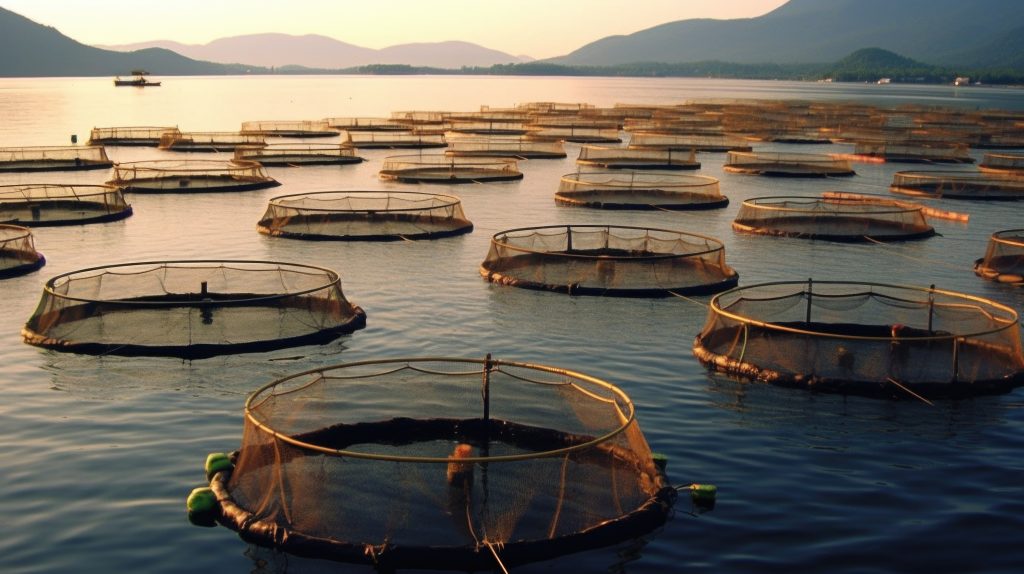
4. Sustainable fishing practices
Target 14.4: By 2020, effectively regulate harvesting and end overfishing, illegal, unreported, and unregulated fishing, and destructive fishing practices.
Target 14.7: By 2030, increase the economic benefits to Small Island developing States and least developed countries from the sustainable use of marine resources, including through sustainable management of fisheries, aquaculture, and tourism.
14.7 is associated with preventing new destructive practices, such as deep-sea mining.
Fish stocks are deemed sustainable if they can reproduce at the same rate as they’re harvested. If they’re harvested above this rate, the stock will shrink until it eventually collapses. This not only impacts the fish in question, but any other animal which it interacts within the food chain with (i.e., eats, is eaten by, or has a mutualistic relationship with).
Globally, 34% of global fish stocks are overfished and 60% are capitalised at the maximum sustainable level. 26 In the UK, half of the 10 most important stocks are overfished or in a critical state. This group includes certain cod, mackerel, and king scallop species. 27
Catch-per-unit effort (i.e., the volume of fuel needed to catch a specific volume of fish) continues to decline despite a boom in technological innovation. 28 This means there are more boats chasing fewer fish. Lower fish stock health is associated with lower profitability. 29 Declining fish stocks become increasingly expensive to chase.
The doubling of global fishing capacity since 1950 was a logical reaction to a booming population. 30 The growing population will require more food yet – it’s been estimated that demand for seafood will almost double by 2050. 31
Global fish stocks cannot sustain the volume extracted from them each year. Warmer, noisier, 32 and more acidic waters make survival harder for the fish that remain. Therefore, scalable solutions must be deployed to reverse concerning trends observed.
Opportunities for investors include:
- Low trophic aquaculture such as mussels and shellfish, both as a regenerative protein source and as pollution cleaners
- Fishery monitoring technology, to both identify stocks in need of regeneration, and to lower the instances of illegal, unreported, and unregulated (IUU) fishing which exacerbates overfishing as an issue
- Novel protein generation, such as plant-based, cell-cultured, or fermented approaches which will increase the volume of available seafood products without increasing pressure on fish stocks
- Fishery and aquaculture technologies which make fisheries and aquaculture more efficient, specific, or mitigate environmental externalities currently observed
Conclusion: Investing in SDG 14, Life Below Water, into the future
Despite covering two-thirds of the planet’s surface, 33 investors often overlook the ocean as an area of opportunity. Today, the Blue Economy is estimated to be worth $1.5 trillion. 34
The Blue Economy provides over 30 million jobs and is a vital source of protein to 3 billion people. 35 Opportunities exist for investors to align themselves with sustainable ocean-based investments through pollution reduction, habitat protection, decarbonisation, and sustainable fishing.
Research indicates sustainable ocean-based investments yield benefits at least five times greater than the costs. This means, over 30 years, investing $2.0–$3.7 trillion globally would generate a net benefit of $8.2–$22.8 trillion. 36
Harnessing the vast potential of the Blue Economy and meeting SDG 14: Life Below Water provides opportunity for financial, social, and environmental benefits.
By investing in sustainable ocean-based initiatives, we can help to protect one of our planet’s most vital resources. This paves the way for a healthier, more resilient planet for future generations.
Footnotes
-
The ocean – the world’s greatest ally against climate change, United NationsScroll to footnote
- Scroll to footnote
-
Assuming an average weight of 65kg per person.Scroll to footnote
-
The State of World Fisheries and Aquaculture (2022), Food and Agriculture Organization of the United NationsScroll to footnote
-
Shipping and World Trade: Global Supply and Demand for Seafarers, International Chamber of ShippingScroll to footnote
-
What is the Cheapest Shipping Method in 2024, CargolineScroll to footnote
-
Investments in the blue economy are increasing, European CommissionScroll to footnote
- Scroll to footnote
- Scroll to footnote
-
Conserve and Sustainably Use the Oceans, Sea and Marine Resources for Sustainable Development, United NationsScroll to footnote
-
The fifth session of the Intergovernmental Negotiating Committee to develop an international legally binding instrument on plastic pollution, including in the marine environment (INC-5), UN Environment ProgrammeScroll to footnote
-
A Deposit Return Scheme is a recycling initiative in which consumers pay a small deposit for packaging on food and beverage items, such as bottles. The deposit is returned in full if the packaging is returned undamaged, and so can be easily reused rather than recycled.Scroll to footnote
-
Recycled plastic resin is currently more expensive than virgin equivalents. Some authorities seek to incentivize companies to scale recycling capacity by mandating recycled resin requirements in many products. An example of this includes the EU Directive on Plastic Packaging.Scroll to footnote
-
Packaging as an Asset, Planet TrackerScroll to footnote
- Scroll to footnote
- Scroll to footnote
-
How are Fisheries and Coral Reefs Connected?, NOAA FisheriesScroll to footnote
-
The State of the World’s Mangroves 2022, Global Mangrove AllianceScroll to footnote
- Scroll to footnote
-
Devastating cost of future coastal flooding for many developing nations predicted in new study, Science DailyScroll to footnote
-
‘Blue recovery bond’ could help turn the tide on overfishing, Planet TrackerScroll to footnote
- Scroll to footnote
- Scroll to footnote
-
Record-breaking North Atlantic Ocean temperatures contribute to extreme marine heatwaves, European CommissionScroll to footnote
-
Ocean acidification, European Environment AgencyScroll to footnote
-
Fish and Overfishing, Our World in DataScroll to footnote
- Scroll to footnote
- Scroll to footnote
-
Use of catch and effort data to monitor trends in economic performance in fisheries, ICES Journal of Marine ScienceScroll to footnote
- Scroll to footnote
-
Global demand for fish expected to almost double by 2050, New ScientistScroll to footnote
-
What is ocean noise?, National Ocean ServiceScroll to footnote
-
How much water is in the ocean?, National Ocean ServiceScroll to footnote
-
In the same boat: ocean finance, inclusivity and social equity, UN Environment ProgrammeScroll to footnote
-
What is the blue economy?, London School of Economics and Political ScienceScroll to footnote
-
Sustainable Ocean Economy for 2050, Approximating its Benefits and Costs, The High Level Panel for a Sustainable Ocean EconomyScroll to footnote


